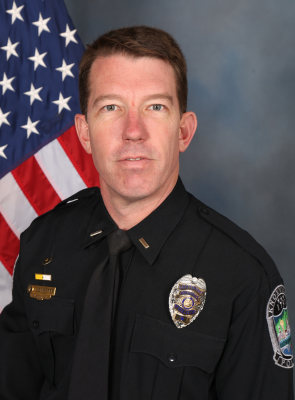- Bureau
- Chief’s Office
- Field Operations Bureau
- Investigations Bureau
- Management Services Bureau
- Professional Standards
- RESOURCES
- PUBLIC INFORMATION
- ABOUT
- CITY OF KNOXVILLE
- JOIN KPD
Special Operations Squad
- Home
- Special Operations Squad
Special Operations Squad
 Special Operations Squad Commander
Special Operations Squad Commander
Lt. Josh Shaffer
jshaffer@knoxvilletn.gov
HISTORY:
The Knoxville Police Department’s Special Operations Squad has been in existence since 1976. It was originally conceived and developed by Sgt. Gary Shaffer, who was selected as Squad Commander. He remained in that position for ten years. Lt. James “Dog” Kennedy became the new commander in 1986 and remained in that position until 2000 when Deputy Chief Don Green assumed the commander position. Lt. Don Jones assumed the commander position in 2002. In 2004 Lt. Doug Stiles assumed the commander position. Lt. Keith Debow assumed command of the specialized unit in 2011.
FUNCTION:
The Special Operations Squad is utilized to respond to unique or high risk situations in which specialized training and equipment is necessary. Situations requiring such response may include but is not limited to: Barricaded Suspects, Hostage Situations, Suicidal Individuals, Sniper Situations, Mass Arrest Situations, High Risk Drug Raids and/or Warrant Service, Civil Disorder, and Dignitary Protection. Major criminal occurrences are incidents in which the lives of citizens or officers is jeopardized by the criminal conduct of others and the scope of the conduct requires prolonged or extensive efforts by the Knoxville Police Department to resolve.
MAKEUP:
The present squad consists of officers who participate as members in addition to their regular duties as police officers with the Department. They are assigned to various functions, either as patrol officers, supervisors, investigators, narcotics officers, or training officers. The Squad consist of four distinct teams. While each officer is trained and may serve as entry teams, there are two designated teams just for high risk entries. These two teams rotate as either the primary or secondary entry units. The third team serves in a containment function, protecting the inner perimeter and are utilized to deliver chemical agents, aid in the release of hostages, and taking the suspect into custody in the case of surrender. They may also assist in the delivering of negotiated items. The fourth team is comprised of the counter sniper unit and observers, who provide intelligence and long range fire support. They are assigned the function of outer perimeter protection.
TRAINING:
Training to become a member of the Squad normally occurs yearly. To be considered for the team, minimum standards must be reached consisting of: 2 years service with the Department, no substantiated physical or verbal abuse complaints, firearms qualifications requirements, recommendation of present and previous supervisors, and physical qualifications. The physical qualifications consist of: 3.1 mile run in 31 minutes, 50 pushups, 50 sit-ups, 8 pull-ups, a 1.5 mile run in 12 minutes, and completion of an obstacle course. After passing these requirements, the applicants must pass an interview board to be accepted to the Basic Training. The training course is 7 days, 80 hours long for Departmental personnel and 5 days / 45 hours long for members of outside agencies.
FREQUENTLY ASKED QUESTIONS:
IS THE KNOXVILLE POLICE DEPARTMENT’S SO TEAM, A FULL TIME TEAM?
No, the officers on the Squad are assigned to normal police department functions. At present, there are two captains, four lieutenants serving in the patrol districts as well as six sergeants. There are three investigators, a motor officer, and the rest are assigned to the Operations Division.
HOW OFTEN DOES SOS TRAIN?
After the initial basic school, members train eight hours a month. As additional training becomes available, officers attend training offered by other agencies such as the Department of Defense, the F.B.I., Def-Tec, IACP, etc.
WHAT TYPE OF ACTIVITIES DOES SOS RESPOND TO?
The primary response is to assist in the resolution of critical incidents. The Squad also assists with the serving of high risk drug, search, and felony warrants for the Narcotics and Investigative Units. Members make up the Honor Guard of the Department, and serving in that capacity, conduct the 21 gun salute and flag service at funerals and memorial services. The members also make presentations to public groups such as the Department’s Citizen Police Academy, youth groups, and other public demonstrations on their equipment and capabilities.
1650 Huron Street
Knoxville, TN 37917
Phone: (865) 215-7000
© Knoxville Police Department 2025